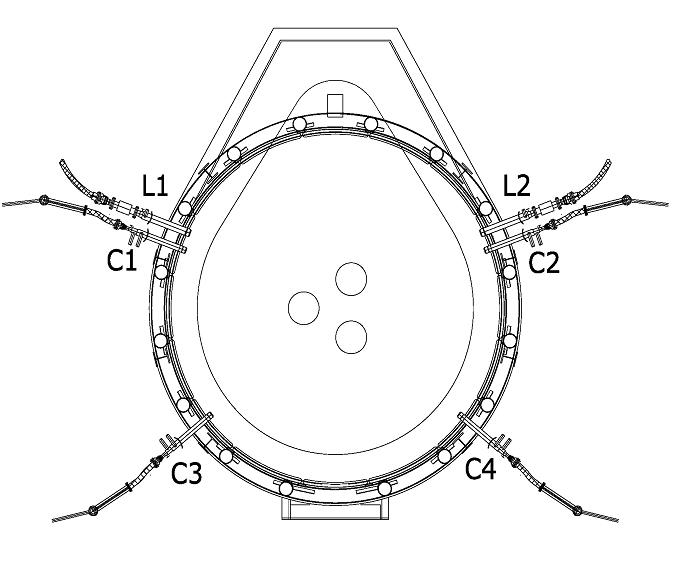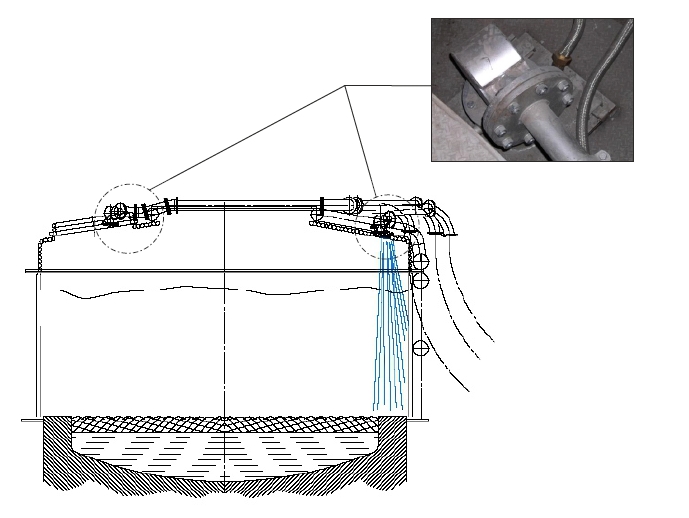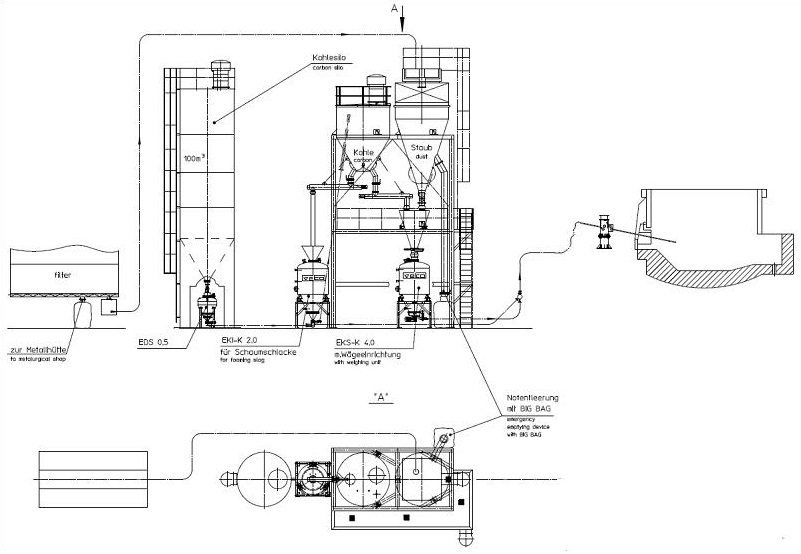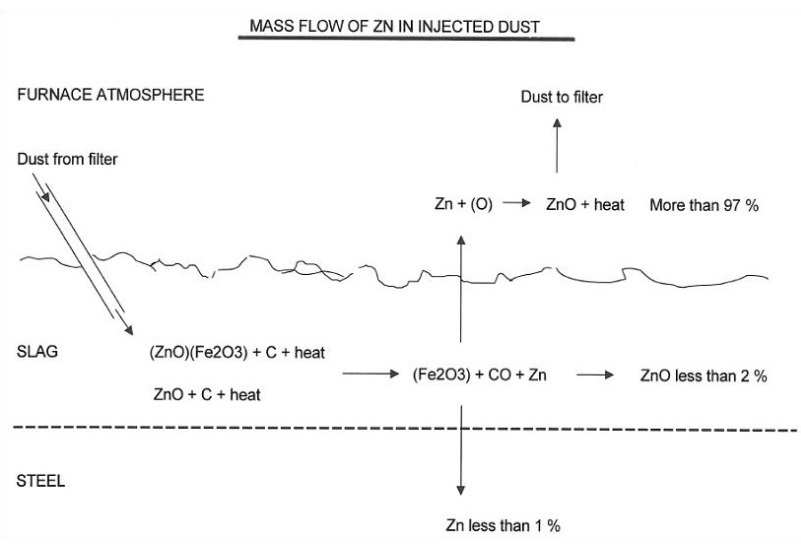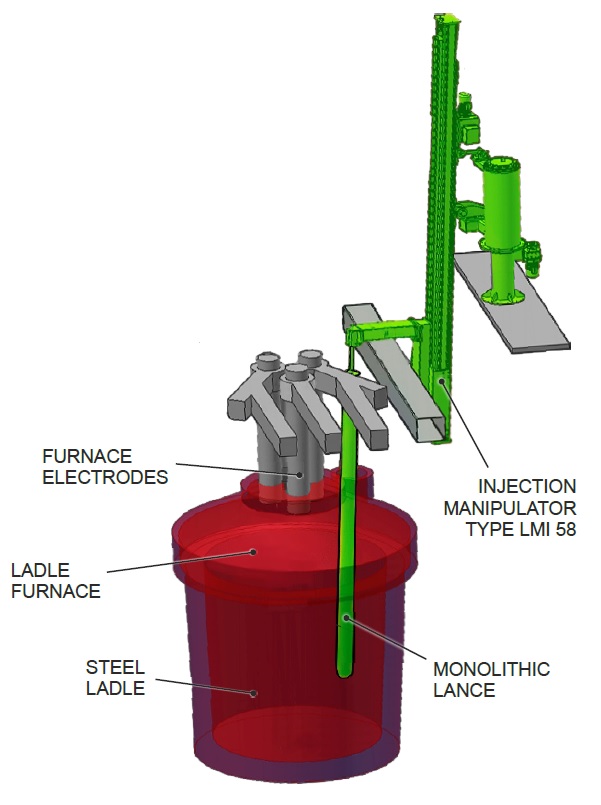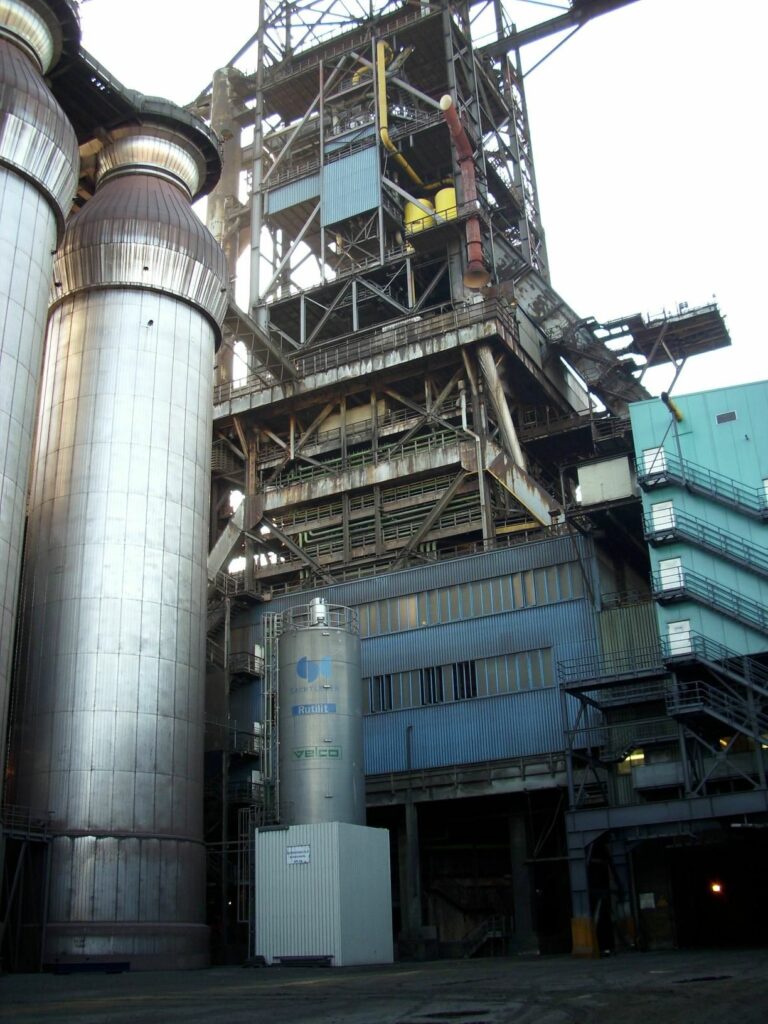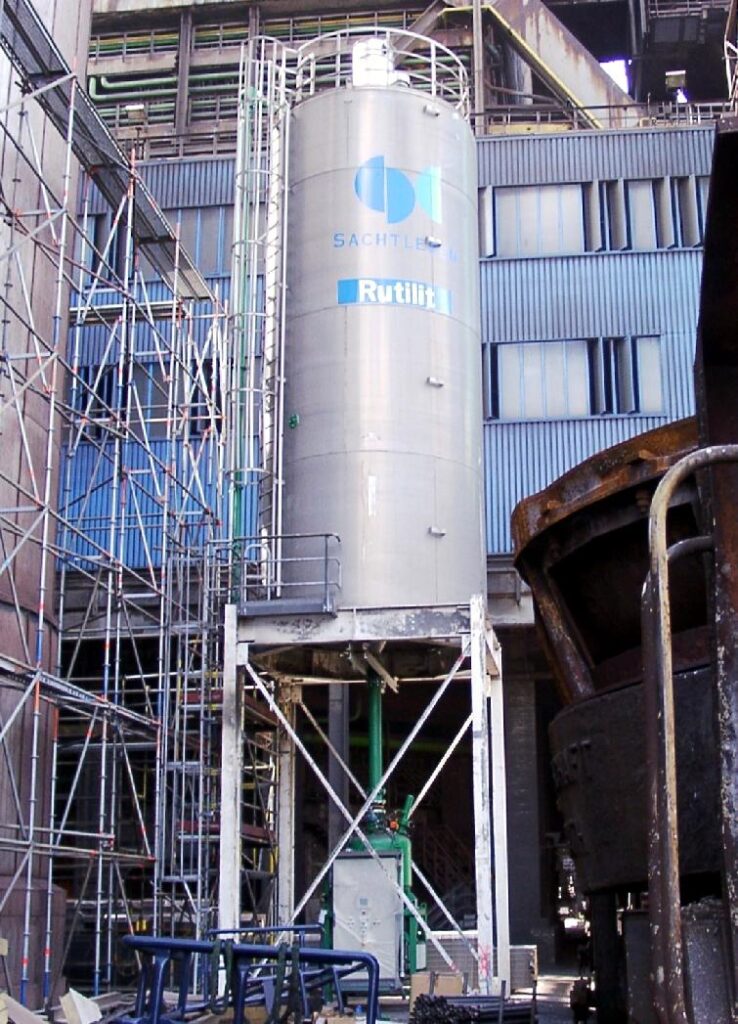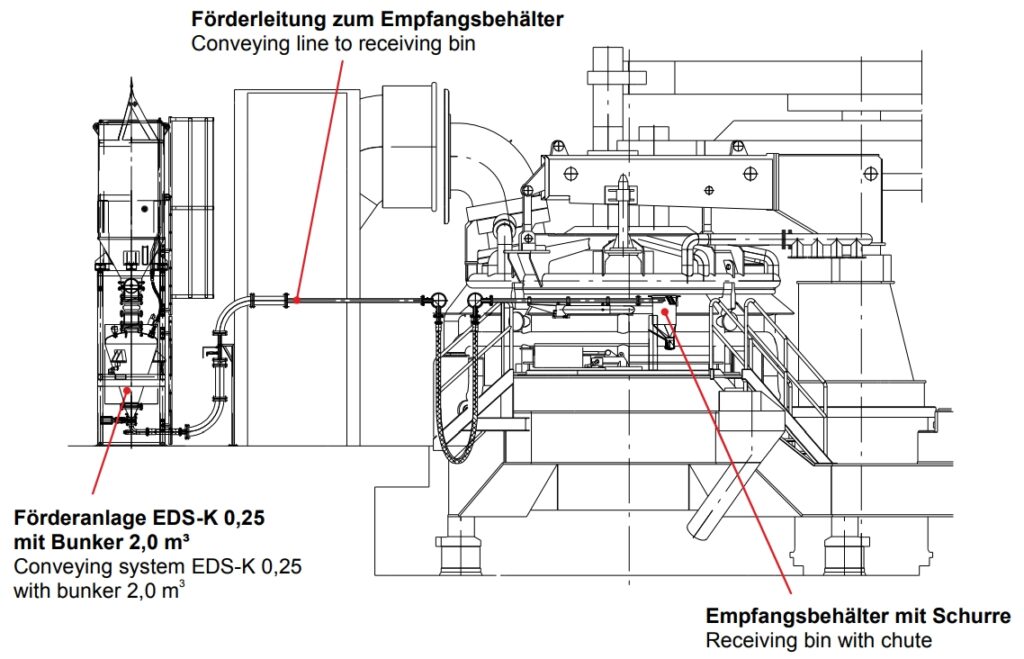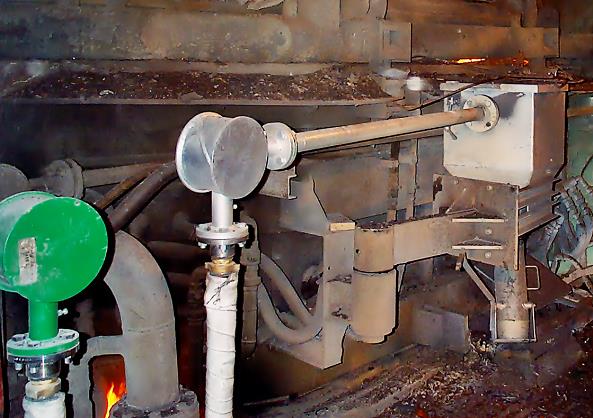APPLICATION IN THE STEEL INDUSTRY
The iron and steel industry is an important pillar of industrialization. Velco’s many years of experience in processing refractory materials has led to the development of gunite machines and gunning manipulators by which the refractory linings can be repaired quickly and safely.
With the pneumatic conveying systems from Velco, various bulk materials such as coal, lime, alloys or even filter dust can be pneumatically conveyed in an operationally reliable manner, or injected in melting furnaces and ladles.
APPLICATION EXAMPLES
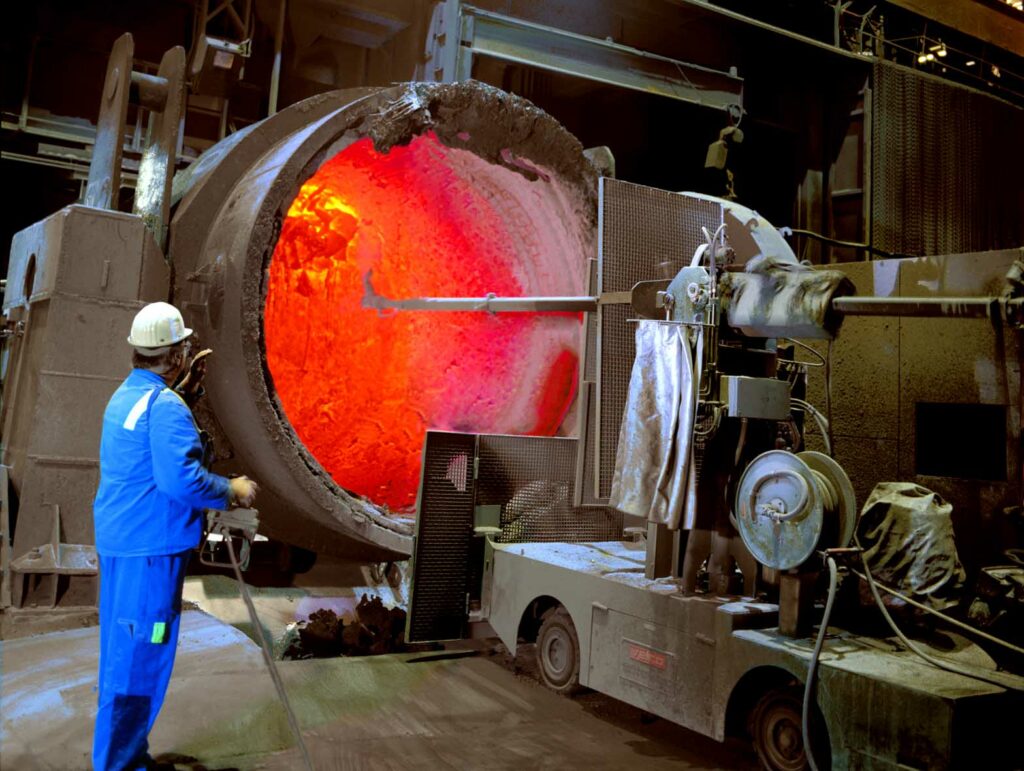
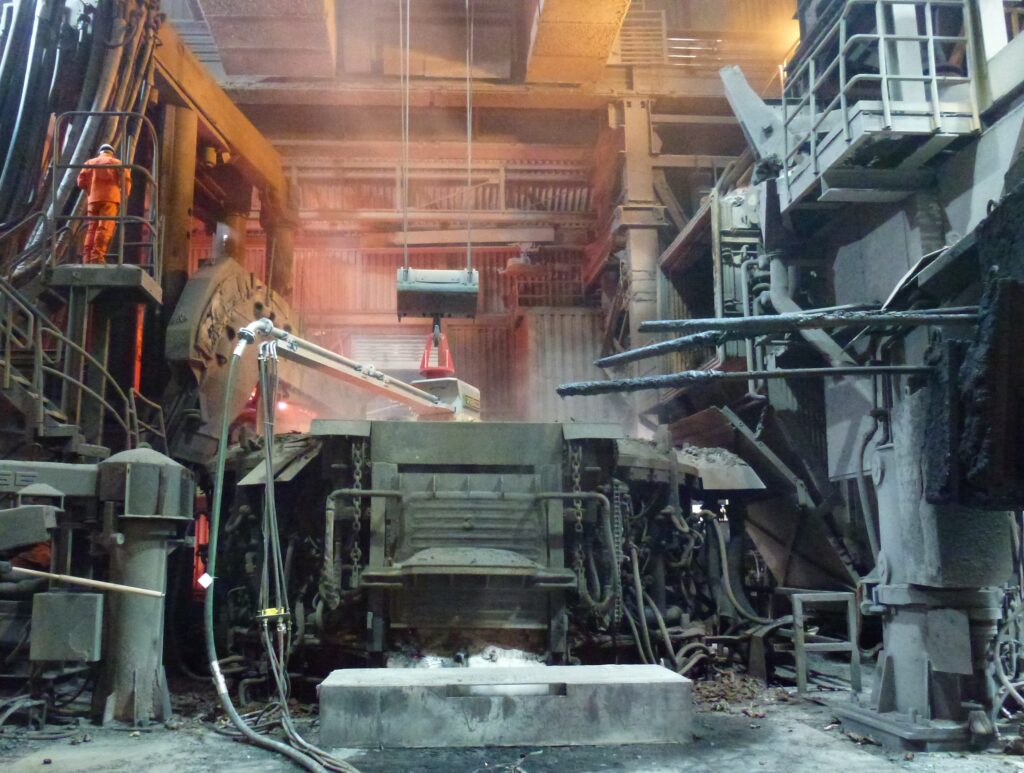
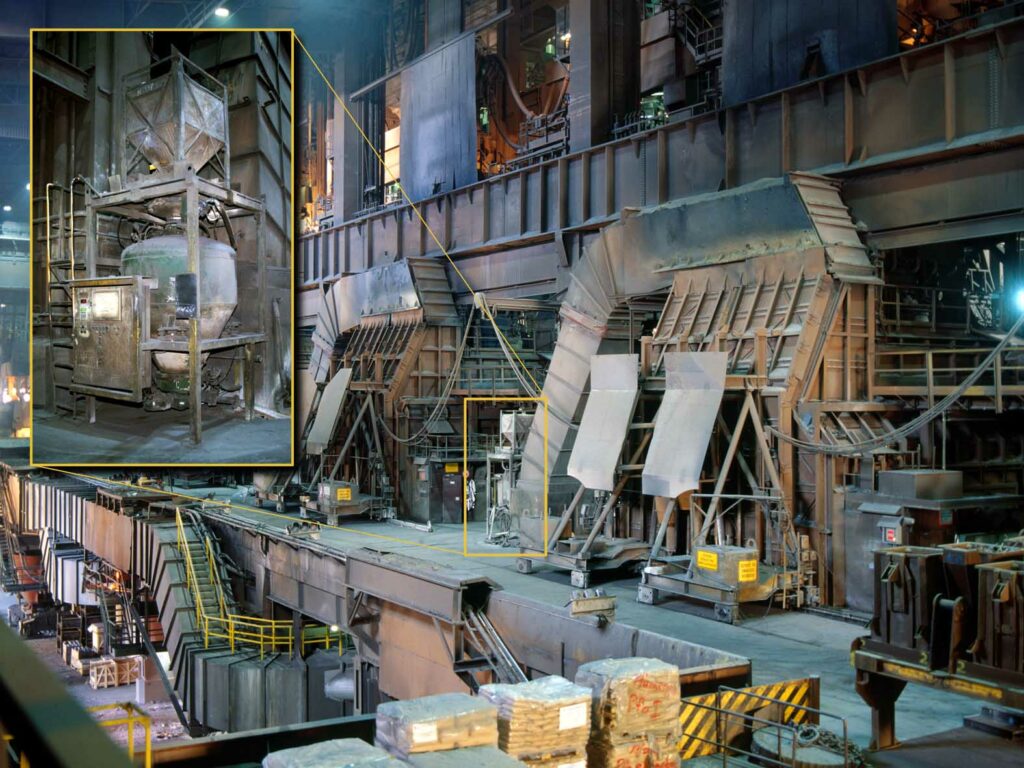
Injection of carbon fines and lime
Injection of carbon fines and lime:
Foam slag technology was introduced in the 1980s to increase productivity of electric arc furnaces. Oxygen and carbon fines are injected via 1-4 point into the slag. This way the created foaming slag in isolates the melt bath. The consumption is 10-15 kg C / t Fe.
For metallurgical reasons or to protect the side wall lime can be blown into the EAF. For this purpose, side wall lances or nozzles in the furnace cover can be used.
Injection of Rutilit®
Hüttenwerke Krupp Mannesmann GmbH (HKM) in Duisburg Huckingen are using an injection system from Velco/Velbert at their blast furnace B. The system is designed for the injection of fine-grained solids, such as Rutilit® and carbon fines which are blown into the blast furnace via the tuyeres. Rutilit® (a product of Venator) is a synthetic titanium dioxide carrier. By targeted injection via selected tuyers to local hot spots, the temperature in the blast furnace frame can be reduced.
The selected titanium dioxide carriers consist mainly of titanium dioxide and iron oxide, which are present side by side in a mineralogically favorable oxidic phase. The free titanium dioxide is reduced to titanium in the blast furnace using carbon or silicon. In liquid iron, the metallic titanium, together with the carbon and nitrogen dissolved in the pig iron, form titanium nitrides and titanium carbonitrides – high-temperature-resistant compounds, which are deposited from the inside on the lining of the blast furnace and ensure the rapid growth of a protective layer there. This protective layer is intended to protect the hot spots in the furnace in order to reach planned delivery points. The thermocouples that are attached around the furnace localize hot spots in the furnace and then rutile sand is blown in over the tuyeres above, during the slag run time. After reaching a “normal” temperature, the blowing process is stopped. If Rutilit® is not required, the system can also be used to inject carbon fines as a cost-effective replacement for heavy oil. In the months of October 2008 to March 2009, a total of approx. 4500 t of injection coal was blown into the blast furnace.
The system consists of a storage silo with a capacity of 90m³, which is filled with silo trucks. The dispenser has 2 outlets which are connected to the lance in tuyere via an approx. 70m conveying line. Injection rates of approx. 40kg / min per line are used.
Addition of tap hole filling compound (EBT)
Automated addition of the EBT sand by pneumatic conveyor system and receiving container above the EBT.
- Automatic tap hole filling without operator intervention
- Significant reduction in the dangers for the operator in the work area
- optionally with a camera to check the filling quality
- The amount of sand can be programmed and adapted to the wear and tear of the tapping hole
- Proven pneumatic conveying at low speed for a long service life of the steel pipes and bends
